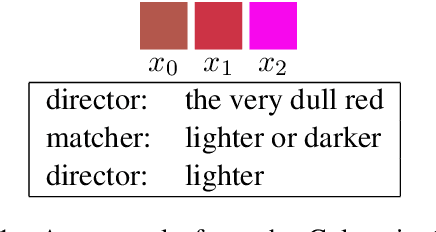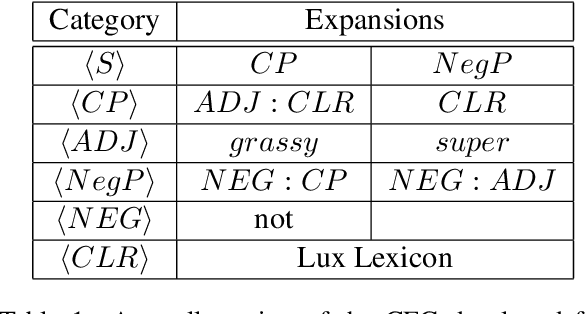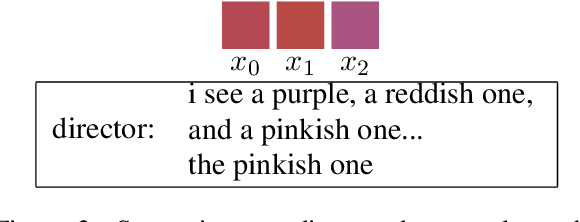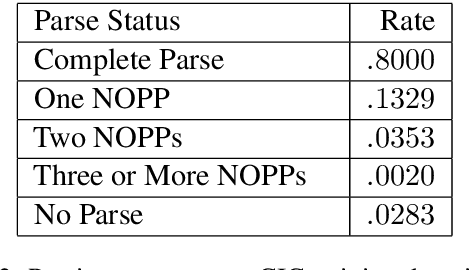Brian McMahan
Discourse Coherence, Reference Grounding and Goal Oriented Dialogue
Jul 08, 2020



Abstract:Prior approaches to realizing mixed-initiative human--computer referential communication have adopted information-state or collaborative problem-solving approaches. In this paper, we argue for a new approach, inspired by coherence-based models of discourse such as SDRT \cite{asher-lascarides:2003a}, in which utterances attach to an evolving discourse structure and the associated knowledge graph of speaker commitments serves as an interface to real-world reasoning and conversational strategy. As first steps towards implementing the approach, we describe a simple dialogue system in a referential communication domain that accumulates constraints across discourse, interprets them using a learned probabilistic model, and plans clarification using reinforcement learning.
Listening to the World Improves Speech Command Recognition
Oct 23, 2017

Abstract:We study transfer learning in convolutional network architectures applied to the task of recognizing audio, such as environmental sound events and speech commands. Our key finding is that not only is it possible to transfer representations from an unrelated task like environmental sound classification to a voice-focused task like speech command recognition, but also that doing so improves accuracies significantly. We also investigate the effect of increased model capacity for transfer learning audio, by first validating known results from the field of Computer Vision of achieving better accuracies with increasingly deeper networks on two audio datasets: UrbanSound8k and the newly released Google Speech Commands dataset. Then we propose a simple multiscale input representation using dilated convolutions and show that it is able to aggregate larger contexts and increase classification performance. Further, the models trained using a combination of transfer learning and multiscale input representations need only 40% of the training data to achieve similar accuracies as a freshly trained model with 100% of the training data. Finally, we demonstrate a positive interaction effect for the multiscale input and transfer learning, making a case for the joint application of the two techniques.
 Add to Chrome
Add to Chrome Add to Firefox
Add to Firefox Add to Edge
Add to Edge